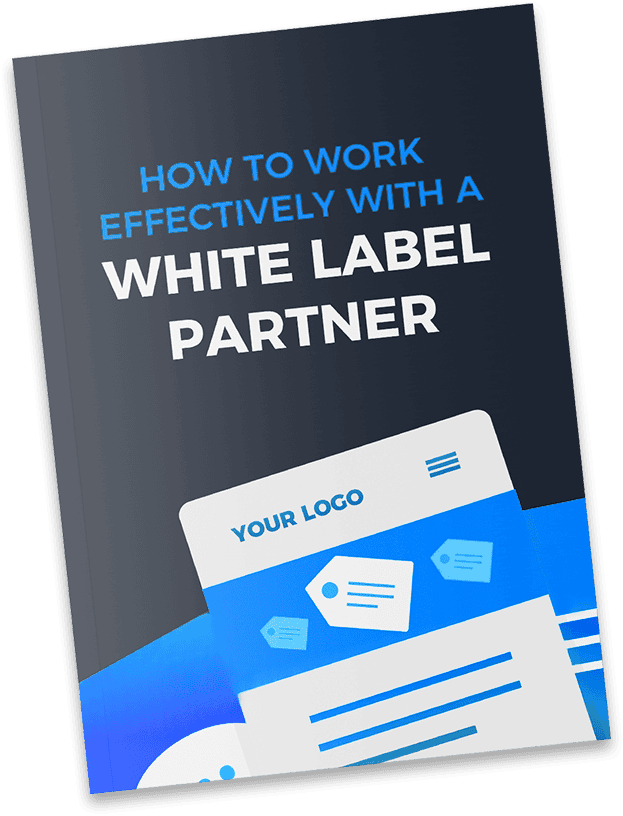In the dynamic realm of e-commerce marketplaces, success extends beyond product variety and efficient shipping. Achieving differentiation and excellence demands a focus on technical search engine optimization (SEO) methods.
This informative post outlines ten crucial technical SEO tips for ecommerce marketplaces. These tips cover diverse aspects such as website structure, metadata optimization, mobile responsiveness, and site speed enhancement, among others. By integrating these strategies, merchants can substantially enhance their visibility in organic search results, attracting a broader audience of potential customers.
Ultimately, prioritizing technical SEO enhances search engine rankings and elevates the overall user experience, leading to increased traffic and potential sales for e-commerce enterprises.
What Is Technical SEO?
Technical SEO encompasses the foundational elements of your website or platform that contribute to its visibility, accessibility, and user experience. This includes optimizing factors such as website speed, mobile-friendliness, site architecture, indexing, and crawlability for search engines.
It focuses on improving a website’s technical aspects to ensure it is easily understood and prioritized by search engine algorithms. This will ultimately lead to better search engine rankings and increased organic traffic.
Ecommerce SEO service providers utilize technical SEO strategies to improve their clients’ rankings and enhance online visibility.
How Important Is Technical SEO?
Utilizing search engine optimization (SEO) represents a practical and scalable method for boosting organic traffic to your marketplace platform. Statistics reveal its efficacy:
- 46% of e-commerce traffic originates organically.
- 41% of online revenue is derived from organic sources.
- 80% of online users disregard paid advertisements in search results.
- 44% of B2B marketers acknowledge SEO as the most effective means for lead generation.
Here Are 10 Proven Ways To Supercharge Technical SEO For Marketplaces
Structured Data
Website code provides search engine crawlers with detailed information about your content, enhancing the visibility of additional details in search results.
- Increases click-through rate: Schema markup can lead to more prosperous search results snippets, which can entice users to click on your website more often.
- Growing importance for various search types: Schema markup is becoming increasingly crucial for different search formats, including voice search, video search, and image search.
- Local search, Google Maps, and Knowledge Graph: Schema markup can also help your business appear more prominently in local search results, Google Maps, and the Knowledge Graph.
- Schema.org semantic library: Schema.org is a collaborative effort between major search engines to create a standardized system for schema markup.
- Implementation methods: Schema markup can be implemented using various methods, including Microdata, RDFa, or JSON-LD.
Security
84% of internet users avoid purchasing from websites lacking proper security measures.
- Implementing an SSL certificate on your website is crucial for user trust and security.
- HTTPS, or Hypertext Transfer Protocol Secure, enhances security and improves loading times compared to HTTP.
- Payment processors like Stripe require HTTPS for secure transactions, highlighting its importance in online commerce.
Also Read: Mastering SEO Branding: Strategies to Increase Your Brand Awareness and Visibility
Speed
- Mobile pages taking over 3 seconds to load lose 53% of visitors.
- Conversion drops by 7% for every 100-millisecond delay.
Solutions
- Reduce web page size: This includes keeping the overall file size of your web pages below 1MB for desktop and 800KB for mobile.
- Optimize images: Resize and compress images to keep their file size below 100KB.
- Minify and combine files: Minify and combine HTML, CSS, and JavaScript files to reduce their size and number.
- Use a CDN: Utilize a Content Delivery Network (CDN) to deliver website content from servers located around the world, which can improve loading times for users in different locations.
- Leverage caching: Implement caching to store copies of website files temporarily for faster retrieval by users.
- Use a dedicated server: Consider using a dedicated server instead of shared hosting, as shared hosting can slow down your website.
- HTTP Compression: Files undergo compression prior to user delivery, optimizing data transmission for increased efficiency.
- Progressive Web Apps (PWAs) and AMP: PWAs and AMP technologies expedite web page loading on mobile devices, prioritizing mobile optimization to enhance user experience and reduce page load times.
Mobile Friendliness
60% of UK consumers use smartphones as their primary internet device.
Google prioritizes indexing and crawling mobile website versions. Responsive design, which uses flexible layouts and CSS media queries, ensures content is displayed and user-friendly across all devices.
Site Architecture And Navigation
Ensure that your marketplace has a well-defined site structure that is straightforward to navigate, organized around products and categories, and aligned with the search patterns of your target audience.
- File Structure: Restrict page hierarchy to a maximum of 3 clicks for user convenience.
- Faceted Navigation: This feature enhances the search experience by providing detailed results through filters, sorting options, and a custom search function.
- URL Structure: Improve search engine visibility by replacing dynamically generated URLs from search queries with SEO-friendly alternatives.
- XML & HTML Sitemaps Help: search engines and users crawl, categorize, and browse website content efficiently.
- Internal Links: Utilize a pyramid structure to effectively channel page authority from the homepage through categories to listing pages.
User Experience
Google’s Rankbrain employs machine learning to assess search result relevance through user behavior indicators such as:
- Duration of page visits: Measures how long users stay on a page, indicating engagement and interest in the content.
- Quantity of pages accessed: Indicates the depth of exploration within a website, reflecting user interest and navigation ease.
- Click-through rates: Reflects the proportion of users who click on a link, indicating the relevance and attractiveness of search results.
- Bounce rates: Indicates the percentage of visitors who navigate away from a site after viewing only one page, reflecting engagement and content quality.
To optimize the placement of elements like call-to-action buttons, utilize heatmaps for tracking user behavior patterns.
Duplicate Content
- Approximately 30% of all content found on the internet is considered duplicate, meaning it exists in more than one location.
- This duplication can have negative consequences for your website’s ranking in search engine results.
- Google defines duplicate content as substantial portions of text that are identical or similar to content found elsewhere, whether on the same website or across different domains.
Solutions
- Prevent duplicate title tags and meta descriptions for improved SEO.
- Employ internal or SaaS moderation to manage user-generated spam effectively.
- Specify preferred URLs with canonical links for better search engine indexing.
- Block crawling of extra dynamic parameters to enhance website performance.
Broken Links
- Slow loading times can negatively impact site performance and affect search engine rankings.
- Utilize Google Search Console to identify and address crawl errors promptly.
- Implement 301 redirects to ensure seamless redirection of outdated or broken links.
- Develop a custom 404 error page to enhance user experience and guide visitors to relevant content.
Images
Product images influence the purchasing decisions of 50% of online shoppers, while 22% of search results now include images.
Ensure optimal image performance by implementing the following strategies:
Discoverability:
- Incorporate ALT tags for enhanced accessibility.
- Utilize structured data to provide context and improve search engine visibility.
Shareability:
- Implement the OpenGraph protocol to enhance content presentation across social media platforms.
Deliverability:
- Adjust image dimensions to accommodate various screen sizes.
- Compress image size to below 100kb for efficient loading.
- Employ lazy loading techniques for improved website performance.
- Consider investing in a dedicated image server to optimize delivery speed.
Also Read: Product Page SEO: Essential Guide for Online Retailers
Meta Tags
Assist search engines in categorizing and organizing web pages by integrating them into vendor listing pages.
Meta Description:
- Enhances Click-Through Rate (CTR)
- Prevents duplication
- Maintain a character limit of 160
Title Tag:
- Boosts Click-Through Rate (CTR)
- Prevents duplication
- Maintain a character limit of 60
Robots Meta Tag:
- Noindex: This directive ensures that search engines don’t index duplicate pages.
- Nofollow: This directive prevents search engines from crawling specific links.
Conclusion
In summary, the implementation of effective technical SEO strategies plays a pivotal role in optimizing the performance of eCommerce marketplaces. Adhering to these ten tips, such as optimizing site speed, enhancing mobile responsiveness, and utilizing structured data, empowers online retailers to boost visibility, attract organic traffic, and drive conversions and revenue.
Staying abreast of the evolving landscape of search engine algorithms and consistently refining technical SEO endeavors is imperative for sustaining a competitive edge in the dynamic eCommerce landscape.
FAQs
How can I improve site speed for better SEO performance?
Improving site speed is crucial for enhancing user experience and SEO performance. To achieve this, focus on optimizing images, enabling browser caching, minimizing CSS and JavaScript files, and leveraging content delivery networks (CDNs) for efficient content distribution.
What are the best practices for optimizing product page URLs?
For product page URLs, adhere to best practices by keeping them concise, descriptive, and rich in keywords. Avoid dynamic parameters and excessive characters, while utilizing hyphens to separate words for clarity and SEO benefits.
How can I optimize product images for SEO?
To optimize product images for SEO, ensure they have descriptive filenames and alt tags containing relevant keywords. Compress images to reduce file size without compromising quality, thus enhancing page load speed.
How can I improve the internal linking structure for eCommerce SEO?
Enhance internal linking structure for eCommerce SEO by establishing a logical hierarchy of categories and subcategories—Utilize breadcrumb navigation to improve user experience and provide search engines with clear pathways to index content. Strategically implement internal links to distribute link equity and drive traffic to key pages.
How can I address duplicate content issues on eCommerce platforms?
Address duplicate content issues on eCommerce platforms by employing canonical tags to specify the preferred version of duplicate content. Utilize 301 redirects to consolidate multiple versions of the same page and ensure each product page offers unique and valuable content.
What measures should I take to optimize for mobile-first indexing?
Optimize for mobile-first indexing by ensuring your eCommerce website is responsive and mobile-friendly. Prioritize mobile usability, optimize page loading speed for mobile users and utilize tools like Google’s Mobile-Friendly Test to identify and resolve any issues.






